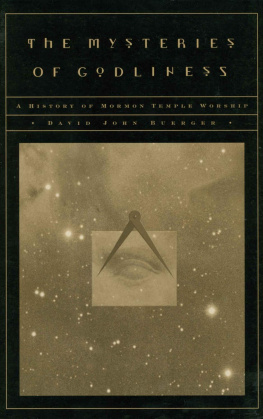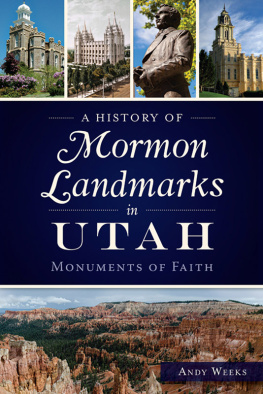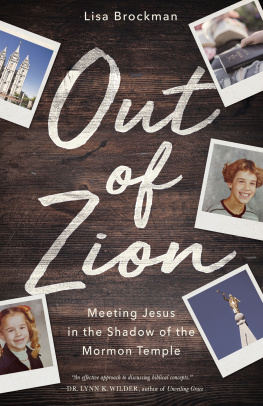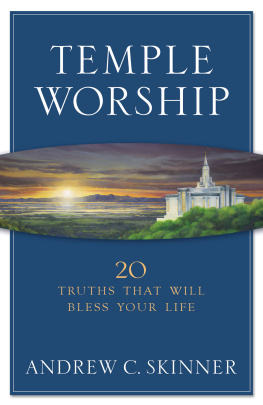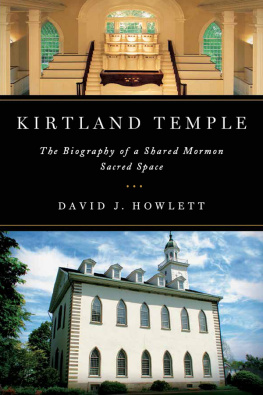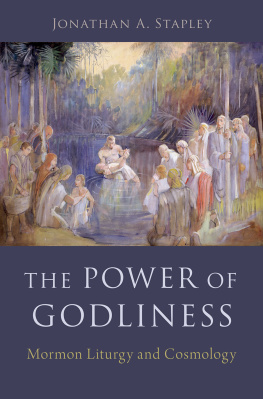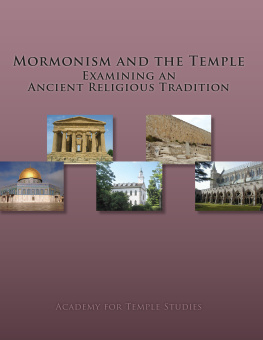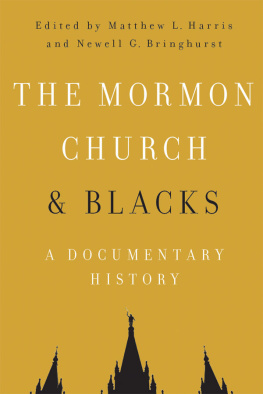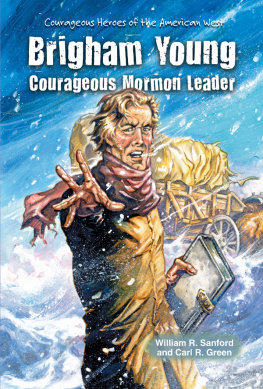The Mysteries of Godliness: A History of Mormon Temple Worship
by David John Buerger
Copyright 1994 Smith Research Associates. All rights reserved.
David John Buerger is a graduate of Brigham Young University, for m er editor-in-chief of Communications Week, and a free-lance journalist and consultant in the co m puter industry. His research on Mor m on history has appeared in Dialogue: A Journal of Mormon Thought and Sunstone m agazine, and he is the recipient of a Best Article Award from the Mor m on History Association.
Preface
Your endow m ent is, to receive all those ordinances in the House of the Lord, which are necessary for you, after you have departed this life, to enable you to walk to the presence of the Father, passing the angels who stand as sentinels, being enabled to g ive them the keys words, the signs and tokens, pertaining to the Holy Priesthood, and gain your eternal exaltation in spite of earth and hel l .
Brigham Young, Journal of Discourses 2:31
For faithful members of the Church of Jesus Christ of Latter-day Saints, the modern temple endowment ceremony is a sacred and powerful ordinance. One official Mormon source calls it a temporal stepping stone which all people must traverse to achieve exaltation in heaven. Since those who enter the temple agree to treat the ceremony with respect, I will confine my discussion to published accounts, journal and diary entries, autobiographies, and other public sources. I will not treat in any significant detail the speculative theological significance, spiritual meanings, or symbolic dimensions of the endowment, important though they are in the lives of Latter-day Saints.
Some readers may feel that any discussion of these ceremonies is inappropriate given their sacred nature. Certain aspects of the ritual are guarded by vows of secrecy. Although I do not wish to offend readers who may not share my understanding about what is appropriate, I have decided that, given exaggerated claims about the temple and its origin by some enthusiastic apologists, a degree of specificity in detail is unavoidable. Hopefully readers will see that I have tried to achieve a balance of scholarly objectivity, reverence for the sacred, regard for the sensibilities of others, and adequate documentation and development of the points to be discussed.
In 1912, one year after the LDS First Presidency asked James E. Talmage to write a book about temples, the church published The House of the Lord . In his chapter on ordinances, Talmage summarized the endowment as follows:
The Temple Endowment , as administered in modern temples, comprises instruction relating to the significance and sequence of past dispensations, and the importance of the present as the greatest and grandest era in human history. This course of instruction includes a recital of the most prominent events of the creative period, the condition of our first parents in the Garden of Eden, their disobedience and consequent expulsion from that blissful abode, their condition in the lone and dreary world when doomed to live by labor and sweat, the plan of redemption by which the great transgression may be atoned, the period of the great apostasy, the restoration of the Gospel with all its ancient powers and privileges, the absolute and indispensable condition of personal purity and devotion to the right in present life, and a strict compliance with Gospel requirements.
Following this overview, Talmage stated more specifically:
The ordinances of the endowment embody certain obligations on the part of the individual, such as covenant and promise to observe the law of strict virtue and chastity, to be charitable, benevolent, tolerant and pure; to devote both talent and material means to the spread of truth and the uplifting of the race; to maintain devotion to the cause of truth; and to seek in every way to contribute to the great preparation that the earth may be made ready to receive her King,--the Lord Jesus Christ. With the taking of each covenant and the assuming of each obligation a promised blessing is pronounced, contingent upon the faithful observance of the conditions.
In the discussion that follows I hope to expand this brief summary and enhance understanding of the temple for both Latter-day Saints and others by providing a history of the endowment, its origins and development, and possible directions for the future.
. Gospel Essentials , rev. ed. (Salt Lake City: Church of Jesus Christ of Latter-day Saints, 1979), 247.
. James E. Talmage, The House of the Lord (Salt Lake City: Church of Jesus Christ of Latter-day Saints, 1912), 99-100.
Chapter 1: Prelude to the Endowment
The Lord Almighty... will continue to preserve me... until I have fully accomplished my mission in this life, and so firmly established the dispensation of the fullness of the priesthood in the last days, that all the powers of earth and hell can n e ver prevail against it.
Joseph Smith, Jr., 1842
For Joseph Smith and successors in the presidency of the Church of Jesus Christ of Latter-day Saints, the temple was at the heart of the Mormon restoration. Both in Kirtland, Ohio, and later in Nauvoo, Illinois, Smith labored to complete holy edifices where the Saints might be endowed with power from on high. Ceremonial washings, anointings, and sealings were first administered in the Kirtland temple (or House of the Lord) in 1836, and other temple instructions and rites were added in Nauvoo in 1842 and 1843. Both have continued to the present in the LDS church. Not unexpectedly, given the developmental character of other early concepts, preliminary stages can be identified in the implementation of these rituals.
The evolving ceremonies can probably best be understood within the context of the similarly developing LDS concept of salvation. Prior to mid-1831 Mormon theology was not predestinarian. The Book of Mormon, for example, does not employ calling and election, elect, destined, predestined, or predestinate when speaking of afterlife, judgment, or salvation. The sole use of the phrase calling and election in a June 1831 revelation published in Doctrine and Covenants 53:1, 7 (hereafter D&C) avoided eschatological implications.
Some time between June and November 1831, however, LDS salvation theology changed, tied to the 3 June 1831 conferral of High Priesthood on church elders.
Despite the controversy which surrounded this event, High Priesthood came to be regarded as the power to seal or perform earthly ordinances which were ratified in heaven. [T]he order of the High priesthood, explained Smith on 25 October 1831, is that they have power given them to seal up the Saints unto eternal life. And said it was the privilege of every Elder present to be ordained to the High priesthood.
This notion, when taken with key Book of Mormon passages, represented a departure from biblical precedent. In the New Testament, for example, the terms to seal and to place a seal on referred to the ancient practice of placing a wax or mud seal to close and protect a document from misappropriation. The confirmation effect of a sealing is seen in several Pauline passages in which God seals Christians by giving them the Holy Spirit or the Holy Spirit of Promise as a ratification of future blessings and promises to come. The Apocalypse of John depicts the servants of God receiving the seal or imprint of God in their forehead. In all pertinent New Testament references, however, it is God who applies the seals. There is no clear reference to a human intermediary performing the sealing function. (See, for example, Rom. 4:11; 2 Cor. 1:22; Eph. 1:13 and 4:30; and Rev. 13:16-18.)
Key players in the sixteenth-century Reformation used many of these sealing passages as evidence for their belief in predestination. Liberal reaction to Calvinist doctrine arose early in the seventeenth century when Arminians rejected this view, asserting that Gods sovereignty and human free will were compatible, that such sealings depended on choices of the individual believer. The Arminian doctrines of free will and individual works continued to be propagated on the American frontier through such nineteenth-century groups as Alexander Campbells followers and other primitivist Seekers. In 1829, when Joseph Smith was working on the Book of Mormon manuscript, these issues were important throughout the so-called burned-over district of western New York where he resided.
Next page
